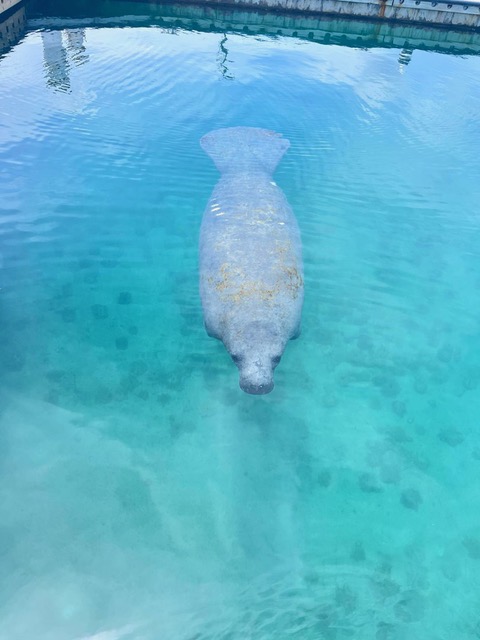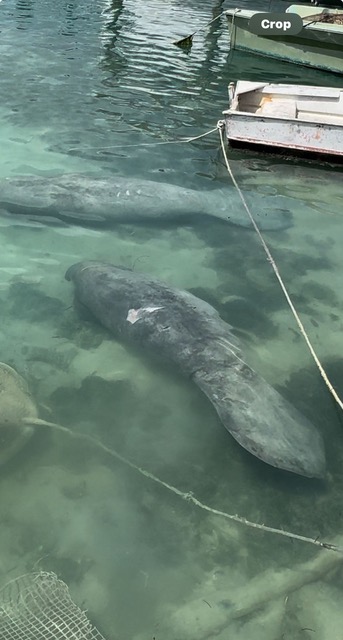On September 25, 2024, a rare and captivating sighting occurred at Bay Shore Marina in Nassau—a manatee was spotted casually drinking fresh water from a dockside hose. Captured in a video shared by Mr. Tinker, the gentle giant’s relaxed demeanor amidst the boats provides a glimpse into its curious nature. But the background comments in the video, including “You want to catch him?” reveal a troubling gap in public understanding about manatee behavior and conservation needs in The Bahamas. This rare encounter not only brings attention to the sporadic presence of manatees in Bahamian waters but also underscores the pressing need for greater awareness and protective measures for these vulnerable marine mammals.
Spotted in Nassau! This rare manatee stopped by Bay Shore Marina for a freshwater sip, sparking curiosity with onlookers asking, ‘You want to catch him?’ 🌊🐋 Discover why it’s so important to give these gentle visitors space and learn more in our latest blog hosted on Atlantis Blur Project Foundation’s website: https://blueprojectatlantis.org/
Video courtesy of The Bahamas Marine Mammal Rescue Organization and Mr. Tinker.
Manatees in The Bahamas: Rare Visitors With Unique Needs
Research by Castelblanco-Martínez et al. (2022) shows that manatees have adaptable migration patterns, allowing them to travel impressive distances. For manatees, the journey to The Bahamas might be an extension of this natural migratory behavior. However, manatees face increased risks when venturing into unfamiliar waters, particularly due to low genetic diversity and small population sizes that heighten their vulnerability to environmental stressors and human interference. Each sighting, therefore, becomes a critical opportunity for conservation action.
The Hidden Risks of Human-Manatee Interactions
Manatees are naturally drawn to freshwater sources, often perceiving hoses or dockside taps as easy access points. While this behavior might seem harmless, it can inadvertently put them at risk, bringing them closer to boat traffic and increasing the potential for human disturbance.
Durban et al. (2017) studied the impact of human activity on marine mammals and found that species like the West Indian manatee often experience stress and increased risk of injury in unfamiliar or densely populated areas. Noise pollution, boat traffic, and direct human interaction can disrupt their natural behavior and add unnecessary stress. These stressors make it all the more important to promote respectful, informed approaches to observing manatees and other wildlife.
Raising Public Awareness: A Key to Manatee Conservation
The comments from the video at Bay Shore Marina underscore a crucial need: public education about manatees’ protected status and the importance of conservation efforts in The Bahamas. Organizations like the Bahamas Marine Mammal Research Organization (BMMRO), Atlantis Blue Project Foundation, and the Perry Institute for Marine Science are at the forefront of this mission, working to educate local communities about the significance of respecting and protecting these gentle creatures.
Educational outreach is essential in shaping a safer environment for manatees. Research by Joyce et al. (2020) highlights the importance of established protocols for marine mammal encounters, ensuring that both animals and observers remain safe. By spreading awareness of best practices—such as keeping a respectful distance and avoiding direct interaction—we can reduce risks and foster positive human-wildlife interactions.
BMMRO’s efforts to create a standardized response network for marine mammal sightings exemplify how community involvement can enhance conservation. This initiative not only protects manatees but also fosters a sense of responsibility and appreciation for marine wildlife among locals and visitors alike.
Protecting Manatees: A Shared Responsibility
Each manatee sighting in The Bahamas offers a valuable opportunity to learn more about these rare visitors and advocate for their protection. It’s a reminder of the urgent need for conservation measures that address both human behaviors and environmental factors affecting manatees. By working together, local communities, conservation organizations, and researchers can ensure that manatees are not only rare sights in Bahamian waters but also safe ones.
Looking to the future, collaborative efforts between BMMRO, Perry Institute for Marine Science, Atlantis – Paradise Island, and Atlantis Blue Project Foundation remain vital to manatee conservation. These organizations play a key role in advancing research, raising awareness, and developing educational programs that protect both manatees and their fragile habitats.
For those interested in learning more or supporting these conservation efforts, visit The Bahamas Marine Mammal Research Organization and Atlantis Blue Project Foundation websites. Every effort, no matter how small, brings us closer to a safer, more sustainable environment for these gentle giants.

Manatee sighting in the crystal-clear waters of Chub Cay, Berry Islands, August 2024.

Figure 4: A mother’s watchful eye: Gina and her injured calf (likely caused by a boat propellor) recovering in Spanish Wells, August 2024.
Written by: Lily Haines | Perry Institute for Marine Science| lhaines@perryinstitute.org

